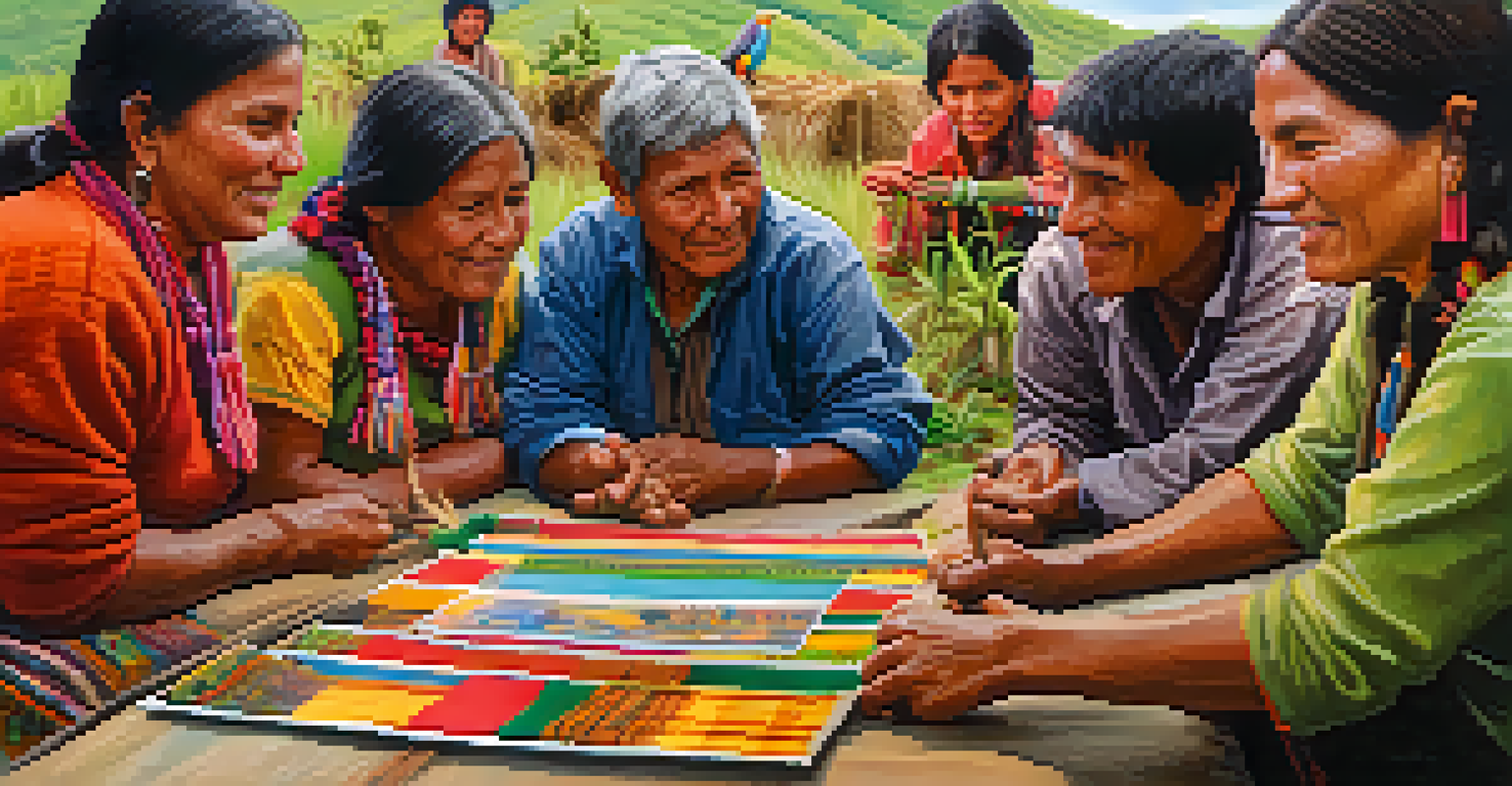The Importance of Biodiversity for Sustainable Development in Peru

Understanding Biodiversity: A Key Component of Nature
Biodiversity refers to the variety of life on Earth, including the diversity of species, ecosystems, and genetic variations. In Peru, this diversity is particularly rich, as the country is home to a vast array of flora and fauna, many of which are unique to the region. This wealth of life is essential not only for ecological balance but also for human survival, as it provides resources like food, medicine, and raw materials.
The greatest threat to our planet is the belief that someone else will save it.
The ecosystems found in Peru, such as the Amazon rainforest and the Andes mountains, play a critical role in maintaining the planet's health. They regulate the climate, filter water, and provide habitats for countless species. When we understand biodiversity, we recognize that it is not just a collection of species; it’s a complex web of interactions that sustains life.
Protecting biodiversity means safeguarding the intricate systems that support all living beings. In a country like Peru, where natural resources are a foundation for many livelihoods, it becomes clear that preserving biodiversity is integral to sustainable development.
Biodiversity's Role in Economic Development in Peru
Peru's economy heavily relies on its natural resources, which link directly to its biodiversity. From agriculture to tourism, various sectors benefit from diverse ecosystems. For instance, the agricultural sector thrives on genetic diversity, which allows farmers to cultivate resilient crops that can withstand climate variations and pests.

Moreover, eco-tourism has emerged as a significant economic driver, attracting visitors eager to experience Peru's unique landscapes and wildlife. This form of tourism not only generates income but also fosters a greater appreciation for conservation efforts. By promoting biodiversity, Peru can enhance its appeal as a travel destination while ensuring the sustainability of its natural resources.
Biodiversity is vital for survival
Peru's rich biodiversity provides essential resources for human survival, including food, medicine, and ecological balance.
Encouraging sustainable practices within these industries can lead to a more balanced economy that respects nature. When businesses prioritize biodiversity, they not only contribute to environmental health but also secure their long-term viability in a changing world.
Cultural Significance of Biodiversity in Peru
Biodiversity is intricately linked to the cultural identity of many communities in Peru. Indigenous peoples, for example, have lived in harmony with nature for centuries, relying on diverse species for food, shelter, and spiritual practices. This deep connection highlights the importance of biodiversity in maintaining cultural heritage.
In every walk with nature one receives far more than he seeks.
Traditional knowledge about the use of local plants and animals is invaluable and often passed down through generations. By recognizing the cultural significance of biodiversity, we can better appreciate how it shapes lifestyles and traditions in Peru. This connection fosters a sense of stewardship among communities.
Preserving biodiversity is not just about protecting species; it’s also about safeguarding the cultural narratives that depend on them. When we invest in biodiversity conservation, we honor the rich histories and identities of Peru's diverse populations.
Challenges Facing Biodiversity in Peru
Despite its richness, Peru's biodiversity faces numerous threats, including deforestation, pollution, and climate change. As agricultural land expands and urban areas grow, natural habitats are lost, putting pressure on native species. This loss not only affects wildlife but also disrupts the ecosystems that support human life.
Illegal mining and logging further exacerbate these challenges, leading to habitat degradation and loss of biodiversity. Additionally, climate change poses a significant risk, altering weather patterns and affecting the delicate balance of ecosystems. These factors create a pressing need for effective conservation strategies.
Economic growth linked to nature
Peru's economy heavily relies on its biodiversity through sectors like agriculture and eco-tourism, promoting both income generation and conservation.
Addressing these challenges requires a collective effort from governments, organizations, and local communities. By raising awareness and implementing sustainable practices, Peru can work towards mitigating these threats and protecting its invaluable biodiversity.
Conservation Strategies for Biodiversity in Peru
To combat the threats facing biodiversity, Peru has implemented various conservation strategies aimed at protecting its natural resources. Establishing protected areas and national parks is one effective approach, allowing ecosystems to thrive without the pressures of development. These areas serve as refuges for endangered species and play a crucial role in preserving biodiversity.
Community-based conservation initiatives also empower local populations to take an active role in protecting their environment. By involving communities in decision-making and management, these programs foster a sense of ownership and responsibility towards natural resources. This collaborative approach not only benefits biodiversity but also enhances livelihoods.
Investing in research and education is vital for promoting biodiversity awareness. By educating the public about the importance of conservation, Peru can inspire future generations to protect the natural world, ensuring that its rich biodiversity is preserved for years to come.
The Role of Government and Policy in Biodiversity
Government policies play a pivotal role in shaping biodiversity conservation efforts in Peru. By establishing legal frameworks that prioritize environmental protection, authorities can create a conducive environment for sustainable development. This includes enforcing regulations on land use, pollution control, and resource management to safeguard natural habitats.
Furthermore, international cooperation is essential in addressing transboundary biodiversity issues. Collaborating with other nations and organizations can enhance conservation efforts and provide access to resources and expertise. This global approach is crucial for tackling challenges like climate change and habitat loss, which transcend borders.
Community involvement is crucial
Engaging local communities in conservation efforts ensures culturally relevant strategies and fosters pride in protecting Peru's natural heritage.
Comprehensive policies that integrate biodiversity conservation into all sectors—such as agriculture, forestry, and tourism—can promote a holistic approach to sustainable development. By aligning economic growth with environmental protection, Peru can work towards a prosperous future that honors its rich natural heritage.
Engaging Communities for Biodiversity Conservation
Community engagement is essential for successful biodiversity conservation in Peru. Local populations often possess valuable knowledge about their environment, making them key players in preservation efforts. By involving communities in conservation projects, we can ensure that strategies are culturally relevant and effective.
Education and outreach programs can empower individuals to take action in their own neighborhoods. Workshops and training sessions can teach sustainable practices, such as responsible land use and wildlife protection. When communities feel informed and involved, they are more likely to support conservation initiatives.

Encouraging volunteerism and participation in local conservation projects can also foster a sense of community pride. By working together towards a common goal, residents can strengthen their bonds while simultaneously protecting the biodiversity that enriches their lives.